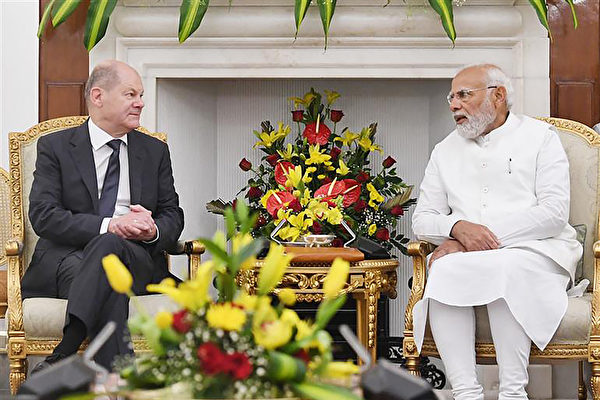Germany’s businesses are optimistic about the growth potential in India, ranging from automobiles to logistics. German Chancellor Olaf Scholz is set to lead a high-level delegation to visit New Delhi this Thursday, accompanied by most of his cabinet members, including the Foreign Minister and the Defense Minister. They will meet with Indian Prime Minister Narendra Modi on Friday to discuss trade agreements and cooperation in the defense sector.
In light of Germany’s export-oriented economy facing challenges, with consecutive contractions in the past two years, and potential adverse effects from trade disputes between the EU and China, the visit to India comes at a crucial time. Following the outbreak of the Russia-Ukraine conflict in 2022, Germany’s reliance on cheap Russian natural gas has caused concerns, prompting the country to adopt a ‘de-risking’ strategy to reduce dependence on Beijing.
While India may not fully substitute China for Germany’s export economy, Germany believes that the vast Indian market can help reduce its reliance on Beijing. India boasts a large pool of skilled young workers, low costs, and an economic growth rate of approximately 7%.
Volker Treier, the Foreign Trade Chief of the Association of German Chambers of Commerce and Industry (DIHK), noted that Germany’s direct investments in India amounted to around 25 billion euros in 2022, roughly 20% of the investments in China. He anticipates this proportion could rise to 40% by the end of the 2020s. Treier emphasized, “China won’t disappear, but India will become more important for German companies.”
KPMG and the German Chamber of Commerce Abroad (AHK) conducted a study revealing that German companies perceive bureaucracy, corruption, and tax systems as hurdles to investing in India. Nevertheless, they remain optimistic about India’s prospects, with 82% of respondents expecting revenue growth in the next five years, compared to only 36% in 2021. Approximately 59% of those surveyed plan to expand their investments.
For instance, logistics giant DHL plans to invest 500 million euros in India by 2026 to enter the rapidly growing e-commerce market. Oscar de Bok, the company’s Supply Chain Executive, expressed, “We see enormous growth potential in the Asia-Pacific region, with India playing a significant role.”
As Volkswagen experiences declining sales in China and faces high domestic production costs, the company is contemplating establishing new partnerships in India. Volkswagen already operates two factories in India and signed a supply agreement with local partner Mahindra in February.
Arno Antlitz, the Group’s CFO, emphasized in May, “We should not underestimate the potential of the Indian market, along with the regulatory uncertainty between China and the United States.”
Similarly, engine manufacturer Deutz, based in Cologne, announced a partnership with TAFE, the third-largest tractor manufacturer in India, with TAFE Motors gaining authorization to produce 30,000 Deutz engines.
Jonathan Brown, a partner at the Boston Consulting Group (BCG), highlighted India’s key advantages of political stability and low labor costs. He recommended adopting a ‘China+1’ strategy to leverage India’s role. Brown emphasized, “Establishing a foothold in this market is challenging. However, once established, the potential is enormous. Merely selling German products locally will not suffice.”
Trade between Germany and India reached a new record in 2023. It is projected that by the end of this century, India will surpass Germany and Japan to become the world’s third-largest economy.
After 16 years of 21 rounds of negotiations, India signed a Trade and Economic Partnership Agreement (TEPA) with the European Free Trade Association (EFTA) in March this year. According to the agreement, EFTA will inject $100 billion of investments into India over 15 years, creating a million job opportunities.
(Adapted from a Reuters report)

